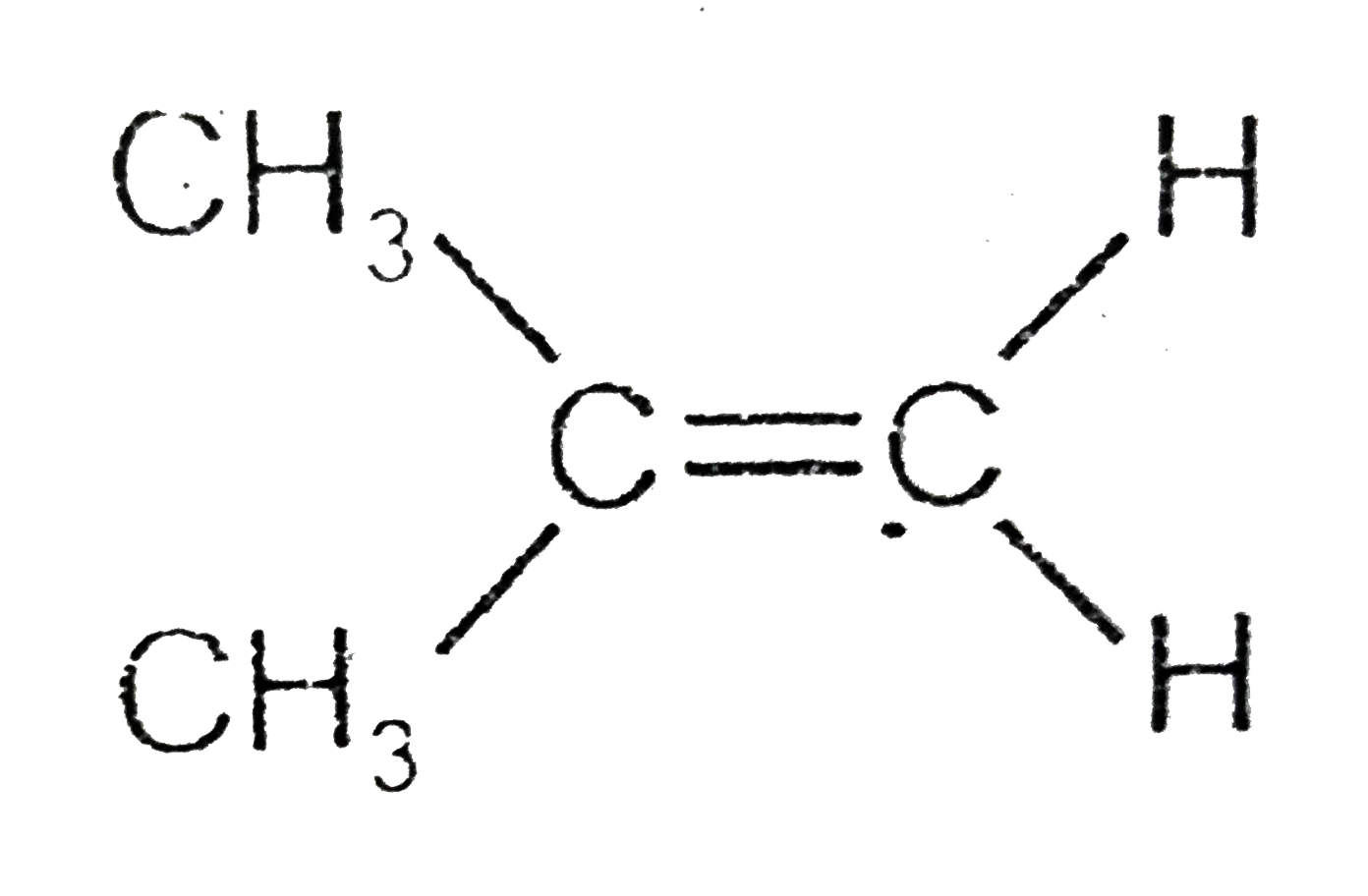The Markovnikov rule is best applicable to the reaction between
C2H4+HCl
C3H6+Br2
C3H6+HBr
C3H8+Cl2
The correct Answer is:C
To answer the question regarding the applicability of the Markovnikov rule, we can follow these steps:
Step 1: Understand the Markovnikov Rule
The Markovnikov rule states that when an unsymmetrical alkene reacts with a protic acid (like HCl, HBr, or HI), the hydrogen atom from the acid will attach to the carbon atom of the alkene that has the greater number of hydrogen atoms already attached. This results in the formation of the more stable carbocation intermediate.
Step 2: Identify the Reaction Type
The Markovnikov rule is primarily applicable to the addition reactions of hydrogen halides (HX) to alkenes. In these reactions, the alkene acts as a nucleophile and attacks the electrophilic hydrogen of the acid.
Step 3: Consider Examples
For example, when propene (an unsymmetrical alkene) reacts with HBr, the hydrogen will add to the carbon with more hydrogen atoms (the terminal carbon), leading to the formation of isopropyl bromide rather than n-propyl bromide.
Step 4: Conclusion
Thus, the Markovnikov rule is best applicable to the reaction between unsymmetrical alkenes and hydrogen halides (HX).
Final Answer
The Markovnikov rule is best applicable to the reaction between unsymmetrical alkenes and hydrogen halides (like HCl, HBr, or HI).
---
The Markovnikov rule states that when an unsymmetrical alkene reacts with a protic acid (like HCl, HBr, or HI), the hydrogen atom from the acid will attach to the carbon atom of the alkene that has the greater number of hydrogen atoms already attached. This results in the formation of the more stable carbocation intermediate.
The Markovnikov rule is primarily applicable to the addition reactions of hydrogen halides (HX) to alkenes. In these reactions, the alkene acts as a nucleophile and attacks the electrophilic hydrogen of the acid.
For example, when propene (an unsymmetrical alkene) reacts with HBr, the hydrogen will add to the carbon with more hydrogen atoms (the terminal carbon), leading to the formation of isopropyl bromide rather than n-propyl bromide.
Thus, the Markovnikov rule is best applicable to the reaction between unsymmetrical alkenes and hydrogen halides (HX).
The Markovnikov rule is best applicable to the reaction between unsymmetrical alkenes and hydrogen halides (like HCl, HBr, or HI).
Topper's Solved these Questions
- HYDROCARBONBOOK - ERRORLESS CHAPTER - HYDROCARBONEXERCISE - ORDINARY THINKING (Objective question) (ALKYNE)
120 Videos
- HYDROCARBONBOOK - ERRORLESS CHAPTER - HYDROCARBONEXERCISE - ORDINARY THINKING (Objective question) (AROMATIC HYDROCARBON)
128 Videos
- HYDROCARBONBOOK - ERRORLESS CHAPTER - HYDROCARBONEXERCISE - JEE SECTION (Matrix Match type questions)
6 Videos
- HALOGEN CONTAINING COMPOUNDBOOK - ERRORLESS CHAPTER - HALOGEN CONTAINING COMPOUNDEXERCISE - Critical Thinking (Jee (Advanced) 2018)
1 Videos
- IONIC EQUILIBRIUMBOOK - ERRORLESS CHAPTER - IONIC EQUILIBRIUMEXERCISE - JS Jee Section (JEE Advanced (Numeric answer type question))
1 Videos
Similar Questions
What is Markovnikov's rule ?
View SolutionThe alkenes have π-bonds which make them highly reactive. These undergo electrophilic addition reactions, Addition of HX to unsymmetrical alkenes gives two products and follow Markovnikov rule and anti- Markovnikov rule. The addition occure through the formation of carbocation in Markovnikov rule and free radicals in anti-Markovnikov zule. The ozonolysis reaction of alkenes helps to locate the position of double bond.
Name the products formed when 2-methylpropene is treated with ozone followed by Zn,H2O.
View Solution
Knowledge Check
Markownikoff rule is best applicable to
AC2H4+HClBC3H6+Br2CC3H6+HBrDC3H6+Cl2Markovnikov rule is applicable to
ACH2=CH2BCH3−CH2−CH3CCH3−CH=CH−CH3D
Hund's rule is applicable for:
A3px,3py,3pzB3s, 3p, 3dC6s, 5p, 4dDAll of the above
Use markownikov's rule and predict the products of the following reaction:
(i). HCl with CH3CCl=CH2
(ii). HCl with CH3CH=C(CH3)2.
View SolutionChargaff's rule is applicable to :
View SolutionMarkovnikov's rule governs the addition of
View SolutionMarkovnikov's rule is empirical but may be explained theoretically on the basis that the addition occurs by a
View SolutionLe-Chatelier's principle is not applicable to which of the following reaction?
View Solution
